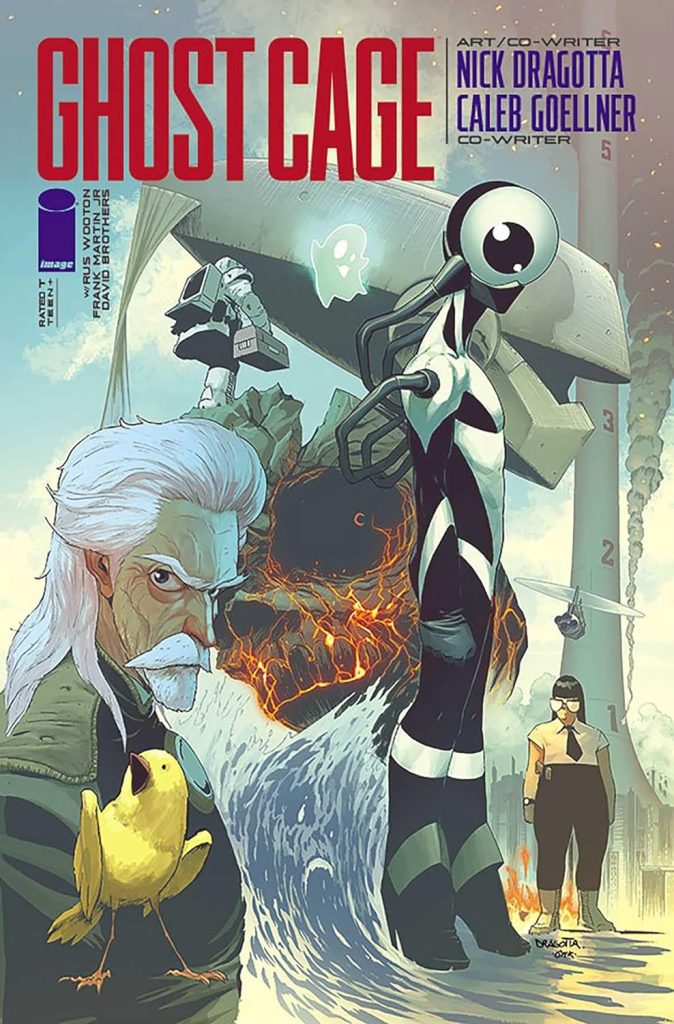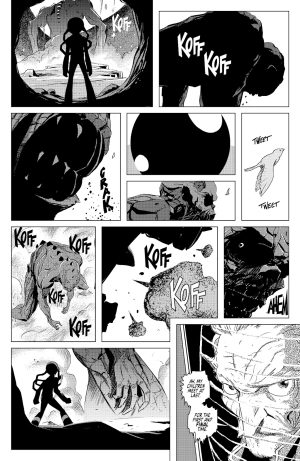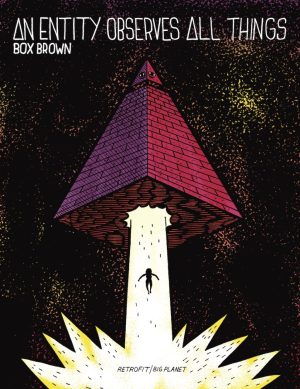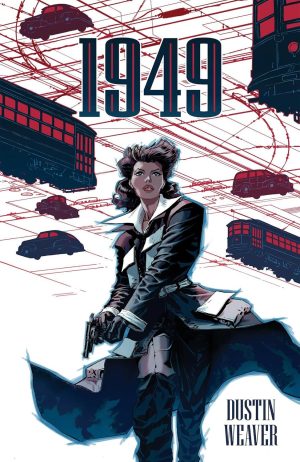Review by Ian Keogh
It’s never a great sign discovering more about what’s happening in a graphic novel via reading the back cover blurb than by reading half the pages. Welcome to Ghost Cage. It’s ambitious and it’s different, but it’s also one of those stories where what’s going on is absorbed as terribly important because it’s constantly being reinforced rather than having a foundation.
According to co-writers Nick Dragotta and Caleb Goellner, not too far in the future energy company Ohm supplies the entire world. Its headquarters is shaped to resemble a giant nuclear cooling tower that dwarfs the city beneath, coming in at multiple times the height of the tallest building, and Ohm is run by Karloff, a crazy old genius who loves the sound of his own voice. As Ghost Cage begins he’s launching his latest creation, a form of AI designed to supplant existing forms of energy. As it’s guided to the top of the tower it symbolically battles representations of existing energy forms.
It’s a muddled story diminished further by the relentlessly irritating dialogue where people speak as if reading pompous proclamations. However, what saves Ghost Cage from being irredeemable is Dragotta’s monumental art. Page after page of stunning imagination with an impressive sense of scale grace the project, not least a tower stretching to the stratosphere. Given the black and white art, the futuristic SF theme and the complex creations, Dragotta echoes the wonder of Akira, and that elevates Ghost Cage.
Some explanations are provided in the final chapter, but it’s too little and too late as far as the story is concerned. Lead character Doyle is sympathetic in attempting to achieve an impossible task, but it’s difficult to work up the sympathy she has for Karloff’s creation Sam, as while the body is human it’s silent and doesn’t have a face to express feelings, just a giant eyeball.
If you can prioritise art over story, Ghost Cage delivers, but for anyone else it’ll be an ambitious puzzle.





